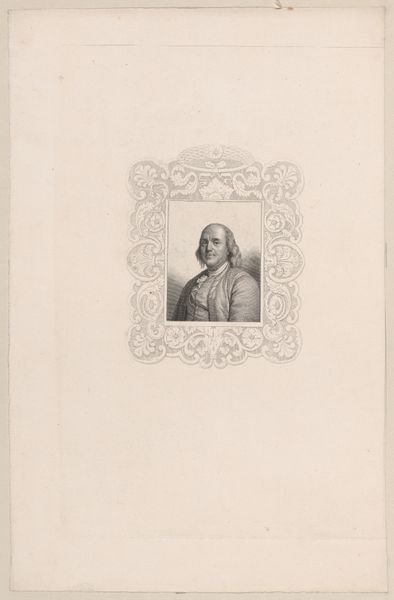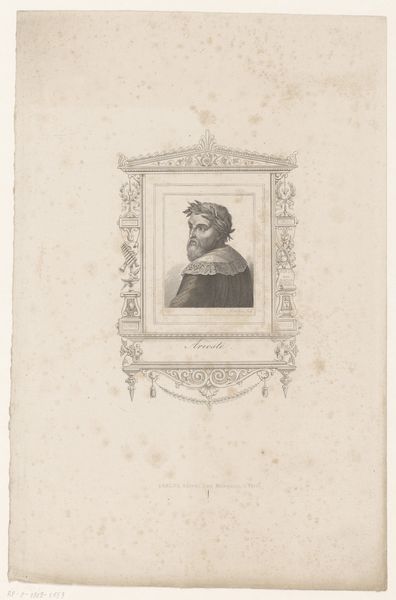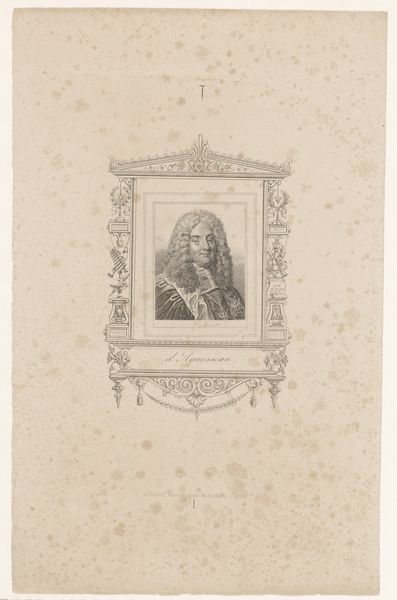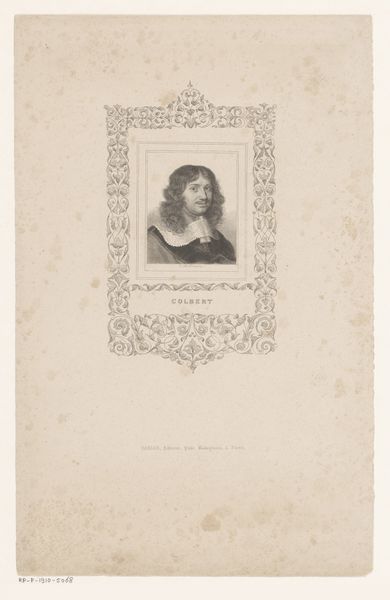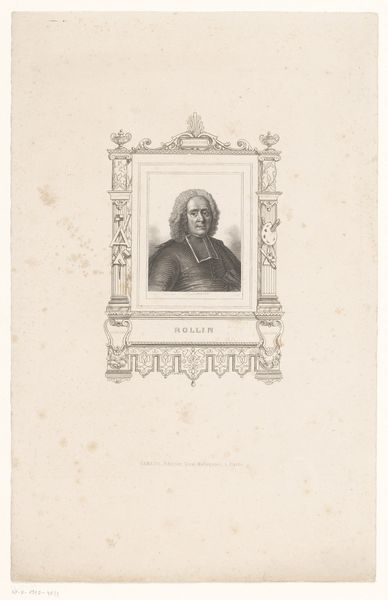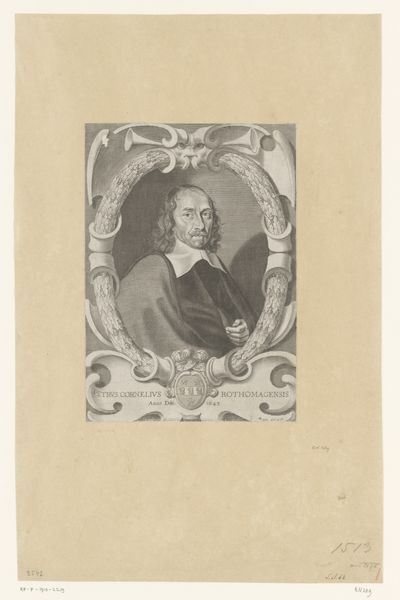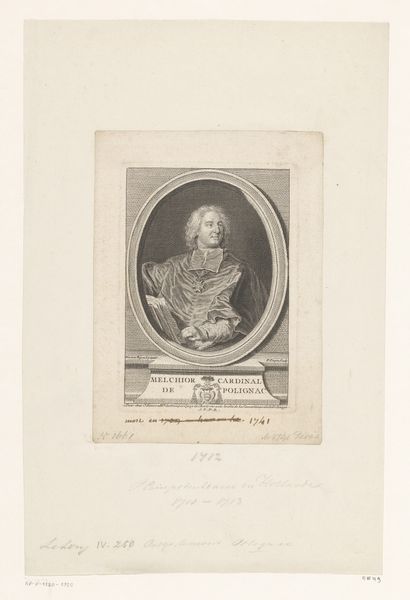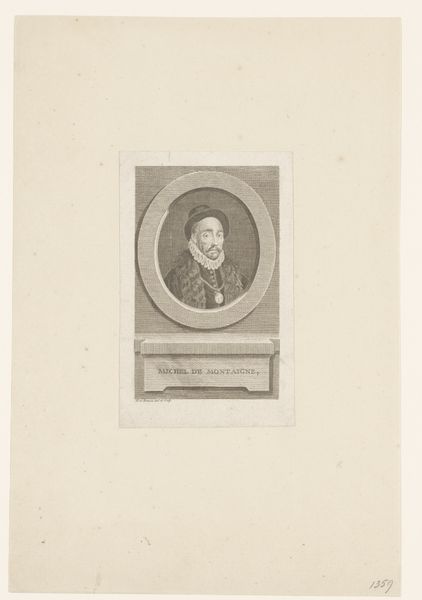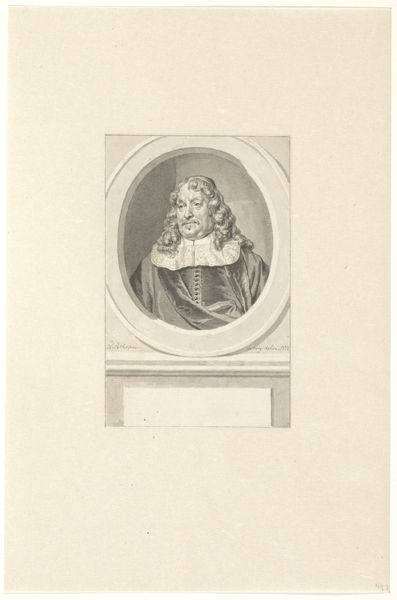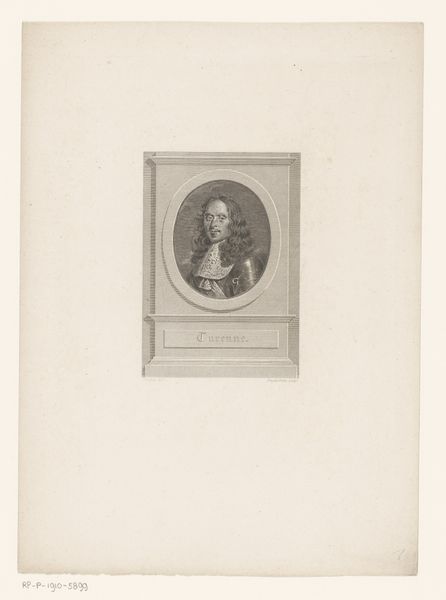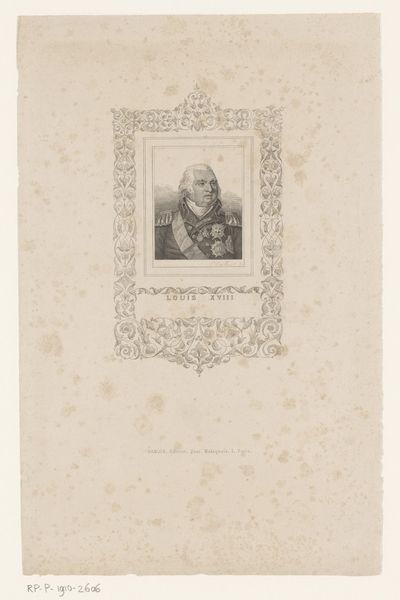
print, ink, engraving
#
portrait
# print
#
old engraving style
#
ink
#
history-painting
#
academic-art
#
engraving
Dimensions: height 201 mm, width 156 mm
Copyright: Rijks Museum: Open Domain
Curator: Here we have a print dating from between 1822 and 1870 by Charles-Ernest Clerget, titled "Portret van Rafaël in een versierde cartouche"—"Portrait of Raphael in an Ornamented Cartouche." Editor: The cartouche is lovely. So decorative. Almost over the top in contrast to Raphael's pretty chill expression, right? Curator: The artist places Raphael within this highly ornate framework, attempting to solidify his status within an established historical and artistic lineage. We must remember this piece was produced long after Raphael's death, fitting into an era that was intensely interested in idealizing the past and its great figures. Editor: Oh, idealized for sure! It makes me wonder, what *was* Raphael actually like? Beyond the legend, beyond the art history books? Did he have bad days? You know, did he spill paint on his clothes, argue with his assistants, get a crick in his neck from staring at the Sistine Chapel all day? This sanitized image airbrushes out any possible, human element. Curator: I agree, the portrait certainly seems geared towards creating an icon. Note, for instance, how the artist subtly uses the elements within the cartouche—a painter’s palette and brushes, for instance—as visual shorthands. This aims at cementing our understanding of Raphael’s legacy within artistic practice. Editor: That palette feels less like a symbol of a hardworking artist and more like an "artist" costume slapped on him after the fact. Look how neat everything is. Not a splodge of stray color! A pristine representation of what being an artist supposedly *means*. Which is maybe what the print *as a whole* is. Curator: Perhaps. From my perspective, the piece’s cultural value resides precisely in this desire to frame the artist, to situate artistic genius within a specific context. Editor: Right, context being everything. Even artificial constructs like this portrait tell a real story about the ongoing desire to understand greatness. To cage it or honor it, depending on how you look at it.
Comments
No comments
Be the first to comment and join the conversation on the ultimate creative platform.
